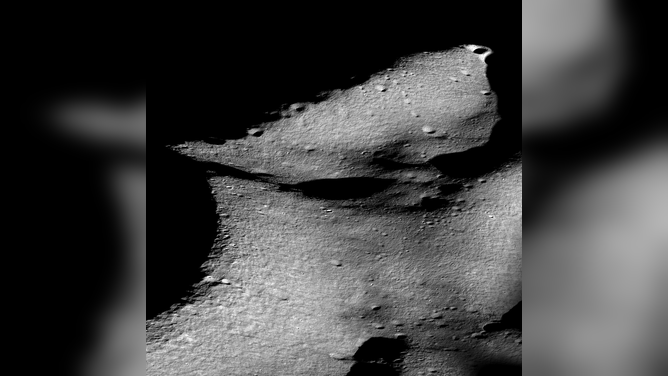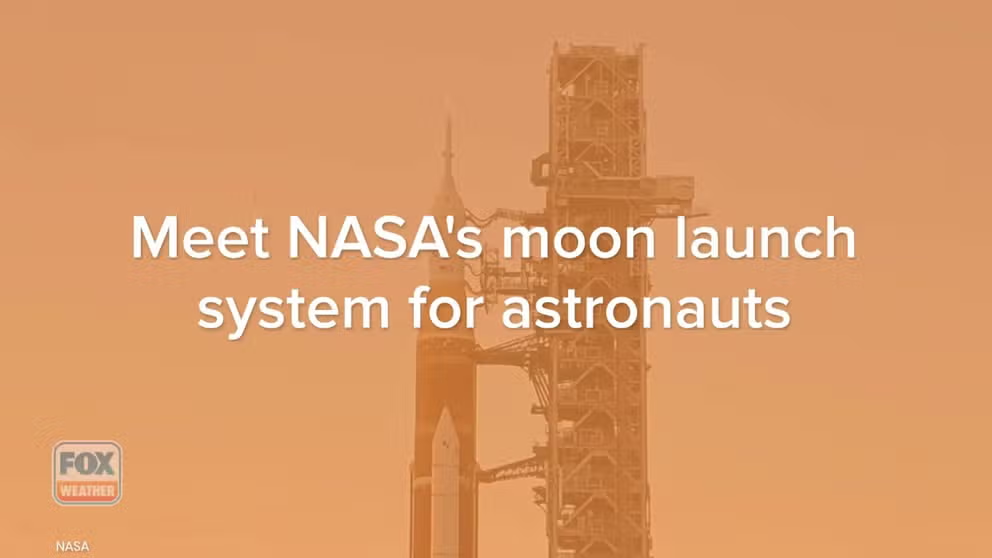NASA astronauts will land in shadowed regions on the moon's South Pole
NASA announces potential lunar landing sites for the Artemis 3 mission, where the first woman and the next man will land in 2025. These areas in the lunar South Pole were chosen because of scientific interest.

Shown here is a rendering of 13 candidate landing regions for Artemis III. Each region is approximately 9.3 by 9.3 miles (15 by 15 kilometers). A landing site is a location within those regions with an approximate 328-foot (100-meter) radius. (Image credit: NASA)
A SpaceX Starship lander, as part of the Artemis 3 mission, will touchdown with the first people to walk on the moon since 1972 within one of 13 sites on the lunar South Pole, NASA announced Friday.
NASA managers revealed the baker's dozen of potential lunar landing sites for the 2025 mission. The announcement comes just about a week before the agency launches its new moon rocket, the Space Launch System, on the Artemis 1 test flight.
The areas selected as candidate landing sites in the lunar South Pole were chosen because of scientific and technological interest. The South Pole is an entirely unexplored area of the moon by humans, nowhere near the Apollo mission landing sites and contains places that are permanently in darkness.
HOW TO WATCH FOX WEATHER ON TV
NASA chief exploration scientist Jacob Bleacher said the launch opportunity would depend on when landing sites are sunlit, which is only for a short time.
"The Apollo missions took full advantage of the lighting conditions near the equator, knowing that they would have the equivalent of 14 continuous Earth days of light once per month. So they could land in those locations and know that they would have a stretch of nine, ten days of light," Bleacher said. "So one of the conditions we're looking at is that it would need to be in light throughout the duration of the mission."
Artemis 3 is expected to be a week-long mission on the lunar surface.
A team of scientists and engineers used data from NASA's Lunar Reconnaissance Orbiter (LRO) and other observations to narrow down the regions on the moon of interest.
After seeing the list of locations, planetary and lunar geologist Kerri Donaldson Hanna, with the University of Central Florida, said the regions are well-known within the lunar science community because they are areas where water ice will likely be.
"The reason why these permanently shadowed regions are so tantalizing is that when we look at where we think water and water ice might be on the South Pole, it's in these permanently shadowed regions," Donaldson Hanna said. "They're some of the coldest places in the entire solar system."
The following candidate regions each have at least 10 potential landing site options within a 9-mile radius:
- Faustini Rim A
- Peak Near Shackleton
- Connecting Ridge
- Connecting Ridge Extension
- de Gerlache Rim 1
- de Gerlache Rim 2
- de Gerlache-Kocher Massif
- Haworth
- Malapert Massif
- Leibnitz Beta Plateau
- Nobile Rim 1
- Nobile Rim 2
- Amundsen Rim

Oblique view of the rim of Shackleton crater (on the left) and the Shackleton - de Gerlache ridge that runs from middle left to upper right. This area is under consideration for the Artemis 3 crewed landing scheduled for 2025. (Image: NASA/GSFC/Arizona State University)
Exploring the South Pole will be a game changer for lunar geology.
Donaldson Hanna said Apollo astronauts collected anorthosite moon rocks; however, at the South Pole, scientists expect anorthosite to be free of heat-producing elements, offering a more pristine sample of the moon's crust.
"It is diversifying the types of rocks that we're studying on the moon, and these have not been studied to date from our sample collection," she said.
Most of the regions selected are high elevation areas next to permanently shadowed regions, and many sites will also be explored by robotic missions.
"The advantage is that they will be very close to these permanently shadowed regions, which means they can be traverses into these regions and really study them in detail," Donaldson Hanna said.
Astronauts will have to learn how to conduct field geology in these shadowed regions, some of which are believed to contain water ice or other resources.
NASA's Artemis lunar science lead Sarah Noble said astronauts are already training to work in these dark regions of the moon, performing field geology in extreme lighting conditions.
THE BUSINESS OF SPACE DIRT: ARTIFICIAL LUNAR, MARTIAN AND ASTEROID SOIL IS IN DEMAND
"Even outside of this permanently shadowed crater is going to be a challenge," Noble said. "We're going out at night and doing analog activities where we bring our own sun, and we test out the lights on the suits and make sure that our astronauts can actually see the geology that they're trying to study."
Bleacher said the space agency hopes releasing the list will encourage collaboration and more input from lunar scientists and engineers.
NASA ROBOTIC MISSION TO UNCOVER MYSTERIES OF LUNAR VOLCANIC REGION
Bleacher said NASA would continue to evaluate the landing sites along with SpaceX to determine the final touchdown location. Due to changing sunlight at the South Pole, the moon's orbit and other factors, there will need to be several landing site options when Artemis 3 lifts off. Bleacher said the final landing sites would be "firmed up" about 18 months before launch.
Narrowing down the landing site
There are several upcoming robotic missions to the moon in the coming years that could also provide valuable data on the candidate sites. Donaldson Hanna is the principal investigator of a lunar robotic mission launching in 2026 and part of the Lunar Trailblazer orbiter science team.
Trailblazer will launch next year, providing high-resolution maps of water ice on the moon's poles.
"Hopefully, we will have lots of Lunar Trailblazer data which will be at a higher spatial resolution and spectral resolution, which should allow us to better identify where water ice might be within these 13 candidate landing sites, and so maybe will help NASA down select to a smaller subset of those landing sites," Donaldson Hanna explained.
NASA's Volatiles Investigating Polar Exploration Rover (VIPER) rover will launch in 2024 and explore the Nobile Region of the South Pole. Nobile Rim 1 and 2 are both potential human landing sites.
"They'll be able to see, as they rove about, the diversity in that landing site region, which should give some amount of ground truth to all of our remote sensing data," Donaldson Hanna said.
Learn about NASA's new moon launch system
NASA's SLS and Orion will return humans to the moon by 2025.
The Polar Resources Ice Mining Experiment-1 (PRIME-1) lander will conduct ice drilling and map resources near the Shackleton Crater. NASA has included several potential human-landing sites near the Shackleton Crater or on connecting ridges around the crater.
SpaceX was not part of the call with reporters Friday, but NASA officials said Starship's first demonstration mission would land in the South Pole but not necessarily in one of the 13 areas.
The uncrewed Artemis 1 launch is scheduled on Aug. 29 at 8:33 a.m. from Kennedy Space Center in Florida. Astronauts will orbit the moon during the next mission known as Artemis 2.
After Artemis 3, NASA and its partners will begin assembling the Gateway orbiting station in lunar orbit. That will serve as an outpost for astronauts to dock in Orion before heading down to the lunar surface.
